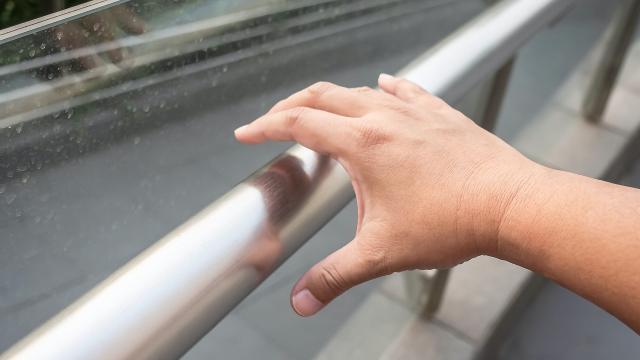Concerns about germs have shaped the last year and a half of everybody’s life, one germ in particular: the virus that causes COVID-19. But the billions of other bacteria, viruses, and other microbes that surround us haven’t exactly ceased to exist. What do we really need to be afraid of? And how can we protect ourselves without going overboard?
I read this article from Today on office germs with a bit of a “nature is healing” wistfulness. Remember when a staple of the news cycle was local news teams swabbing some category of objects and declaring them dirtier than a toilet? It looks like we’re back.
We are always surrounded by microbes, and that is normal
Have you ever been outdoors with children? Sooner or later, one of them will complain about an ant crawling on or near them. If you’re the parent, they will expect you to do something about it. And then you have to explain that we are outdoors, and outdoors is where bugs live.
Similarly, there’s no need to be shocked at microbes being in your home, or on the surfaces you frequently touch. This is where they live.
Bacteria and other microbes inhabit every corner of the earth. They live on our skin and in our bodies, in miniature ecosystems that we refer to as our “microbiome.” Some of them cause disease, but most are bystanders.
So what about all those bacteria on your desk, or your kitchen counter, or whatever? Most often, we brought them there. They haven’t marched in like a tiny invading army from Microbe Central; they’re just the germs that were already on our skin, and then we touched things, and left some of them behind.
As microbiologist Mark O. Martin told us during a previous germ craze (this one about hand dryers in public bathrooms), “You’ve got microbes all over your skin, but that doesn’t stop you from holding hands.”
What’s actually worth doing
Now that we’ve established that we are surrounded by mostly-harmless microbes, let’s talk about what we can do to protect ourselves from the ones that actually could make us sick.
Be careful with raw meat and other food-safety hazards
Certain food items can be contaminated with harmful bacteria, like Salmonella in raw chicken and eggs, E. coli in beef, and so on. That’s why it’s important to wash your hands after preparing these foods, and to wash or disinfect the utensils and surfaces that those foods touched in the process. (Hot soapy water is good enough for most kitchen tools, but if you prefer to use a disinfectant on your countertops, that’s fine too.)
Wash your hands reasonably often
Besides washing your hands after touching raw meats, you should also wash them after touching the garbage, pets or pet-related items (like their waste or their food bowls), diapers, actual dirt (you have no idea how many microbes are in dirt), and after you use the bathroom. The U.S. CDC has more guidelines in their hand washing guide here.
It’s also a good idea to wash your hands before you eat, to make sure that whatever you’ve been touching isn’t going to make it into your mouth.
Reasonably frequent hand washing will also keep the yuckier microbes off surfaces like your desk, since as you’ll recall, we mostly brought them there via our own grubby hands.
Take precautions around people who are sick or may be sick
The thing about germs that make people sick is that we tend to get them from other people who are sick. If your kid has diarrhoea, be scrupulous about cleaning the bathroom. (This is a good time to use an appropriate disinfectant, like bleach).
Some of the things we’ve learned from COVID will come in handy here, too. Wearing a mask in public can help keep your germs away from others if you are sick; it may also help keep you from getting sick, even from things like colds and flu.
Cleaning surfaces and using hand sanitizer turned out not to be particularly important in preventing the spread of COVID, but other illnesses like colds, flu, and diarrheal diseases do spread via surface contact, so hand hygiene and regular cleaning (not disinfecting) of high-touch surfaces are good habits to keep up.

Leave a Reply
You must be logged in to post a comment.